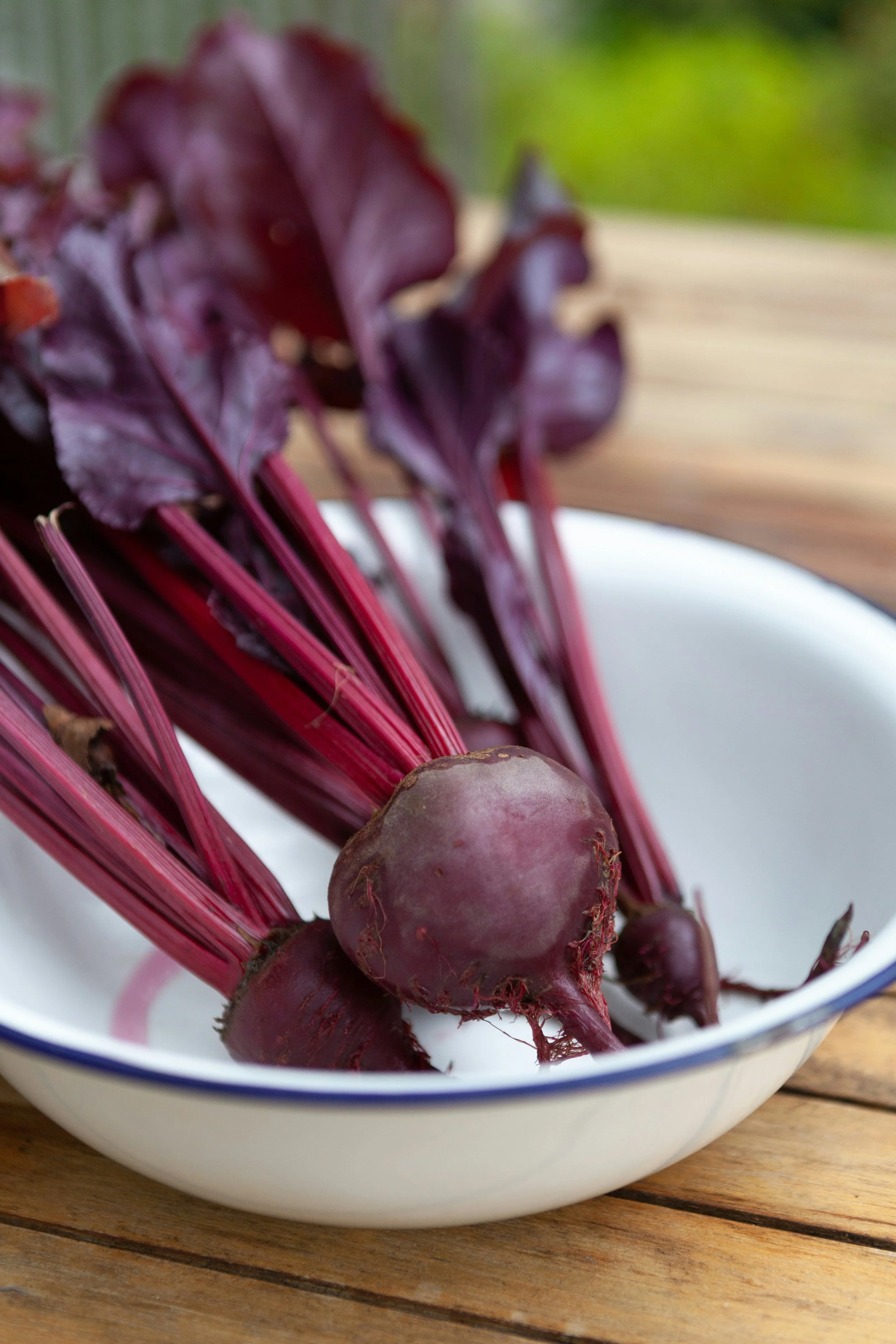What? Why? Beetroot
From My Kitchen: What a Nutritionist Eats & Why
Photo by Annemarie Schaepman on Unsplash
What?
Earthy, vibrant and naturally sweet, beetroot is a deeply nourishing root vegetable rich in colour pigments and plant compounds that support whole-body health. Whether roasted, grated, juiced or blended into dips, beetroot brings both flavour and function to meals — especially when focusing on skin health, cardiovascular support and digestion.
Why?
Supports heart and circulation
Beetroot contains natural nitrates, which the body converts into nitric oxide — a compound that helps blood vessels relax.(1) This can support healthy blood pressure, circulation and exercise endurance.(1,2,4)Rich in anti-inflammatory antioxidants
The deep red-purple colour of beetroot comes from antioxidants anthocyanins and polyphenols — powerful antioxidants that help protect cells from oxidative stress and calm inflammation linked to skin irritation, joint discomfort and ageing processes.(3)Offers benefits for cholesterol and blood sugar regulation
Those same antioxidants, plus different fibres contained in beetroot, have been shown to exert positive benefits on cholesterol and blood sugar levels.(4)
Provides betaine for liver & methylation support
Beetroot is a natural source of betaine, which supports healthy liver function and methylation — a key biochemical process involved in hormone balance, detoxification, mood regulation and energy metabolism.(4,5)Contains choline for brain and nervous system health
Choline plays an important role in nerve signalling and the structural integrity of cell membranes — supportive for cognitive health and stress resilience.(6)Supports gut health
Beetroot contains fibres which alongside polyphenols help feed beneficial gut bacteria, support regular bowel movements, and promote a diverse, resilient microbiome.(7,8)
Photo by Monika Grabkowska on Unsplash
How to Enjoy
Roast and serve warm with feta, citrus and herbs
Grate raw into salads for fresh sweetness and crunch
Blend into hummus for a colourful, nutrient-dense dip
Juice with carrot, lemon and ginger
Add to soups or risottos for depth and colour
Mix finely grated beetroot into mashed potato for a pink colour that is always a hit with younger children
Photo by American Heritage Chocolate on Unsplash
A mindful note
Beetroot reminds us that colour means nourishment. Nature’s deeply pigmented foods often carry powerful protective compounds — adding them regularly can be a simple way to support longer-term health.
Summary
Beetroot is a versatile, colour-rich vegetable that supports circulation, liver function, methylation, brain health and gut balance — a simple way to bring both nourishment and vibrancy to your meals.
References:
https://pmc.ncbi.nlm.nih.gov/articles/PMC6316347/
https://pmc.ncbi.nlm.nih.gov/articles/PMC12195723/
https://pmc.ncbi.nlm.nih.gov/articles/PMC8565237/
https://pmc.ncbi.nlm.nih.gov/articles/PMC8565237/
https://pmc.ncbi.nlm.nih.gov/articles/PMC5452175/
http://dx.doi.org/10.2174/1871524923666221121123937
https://pubmed.ncbi.nlm.nih.gov/36527987/
https://www.mdpi.com/2075-1729/14/11/1391



